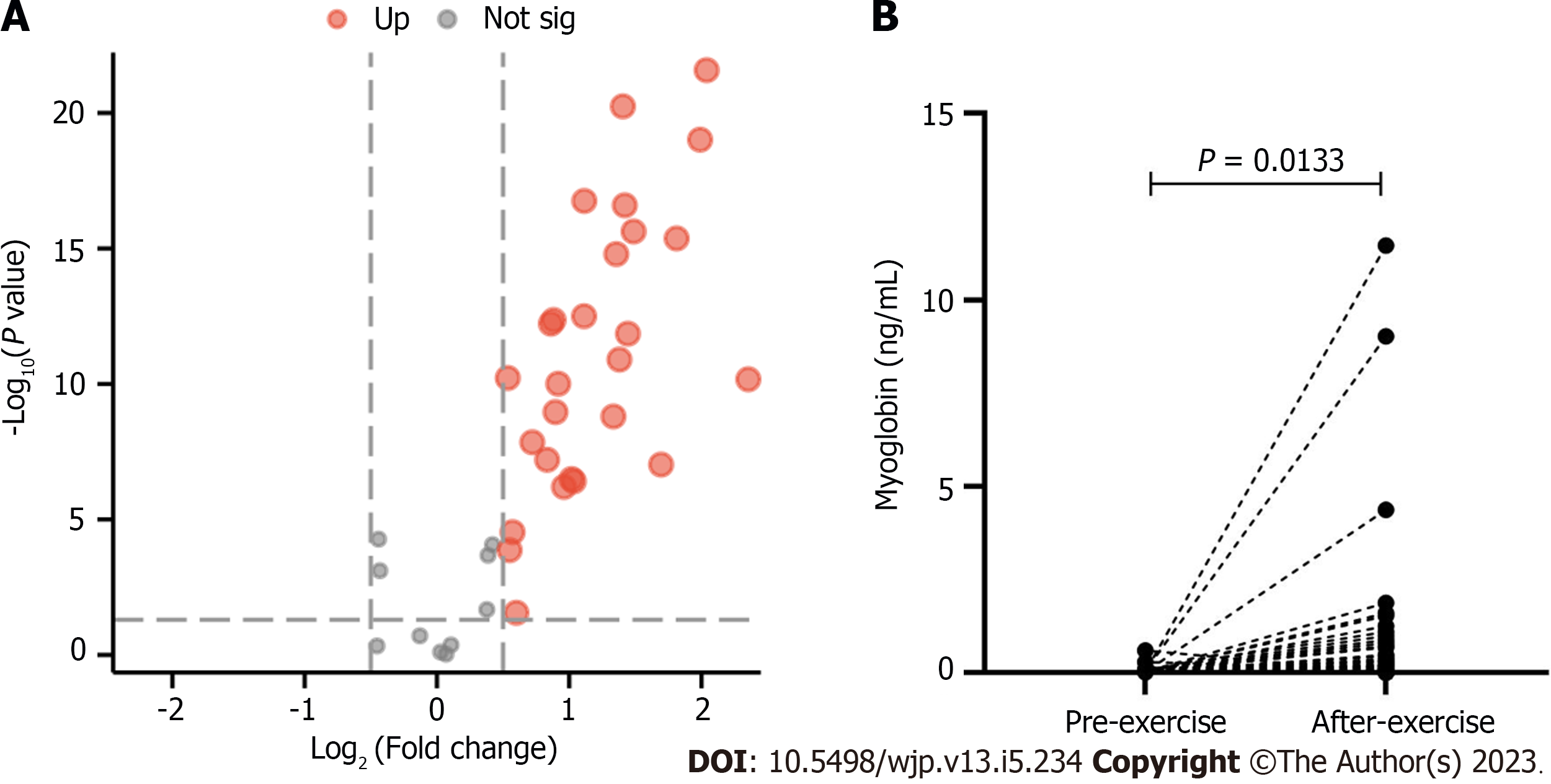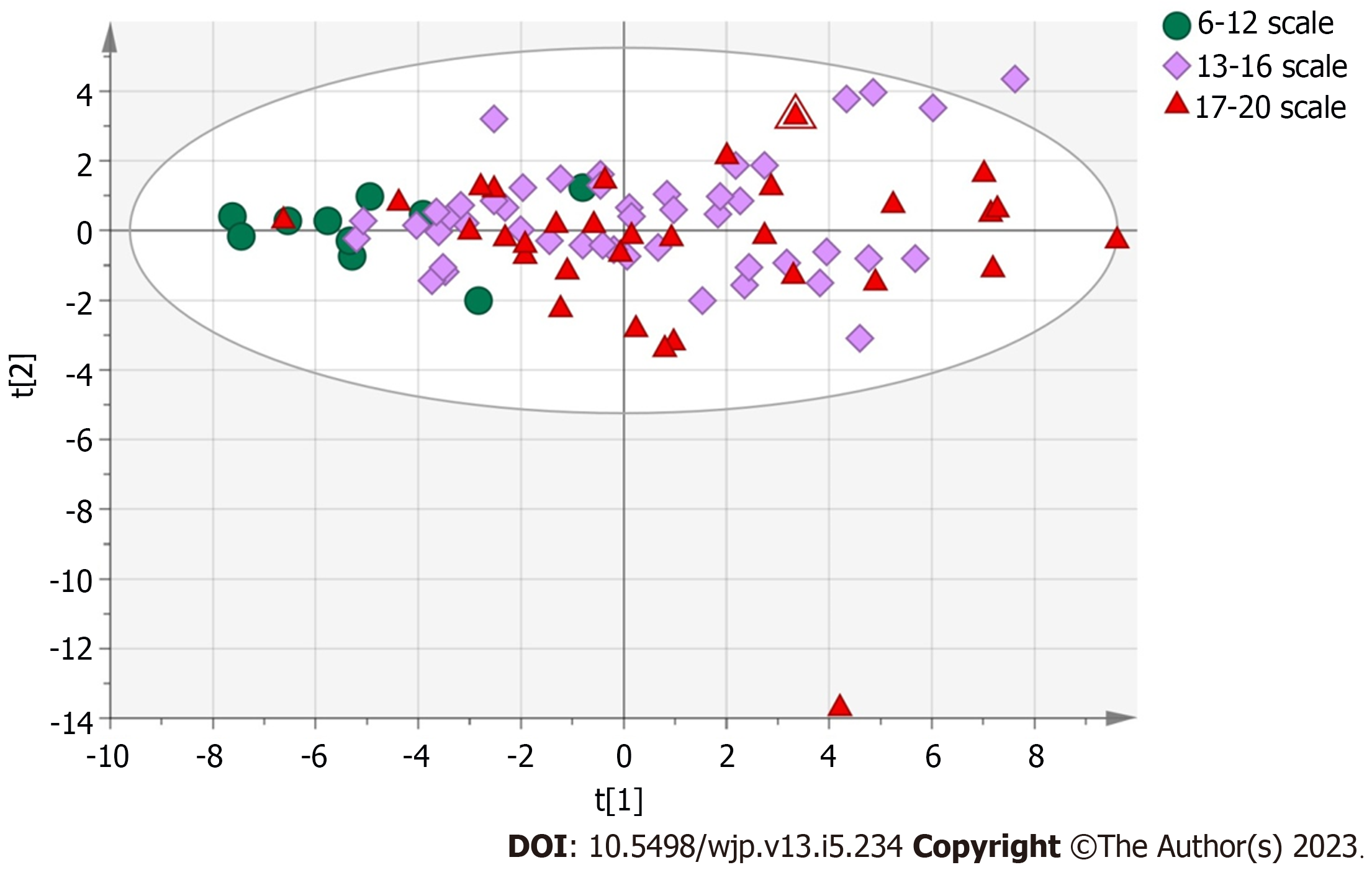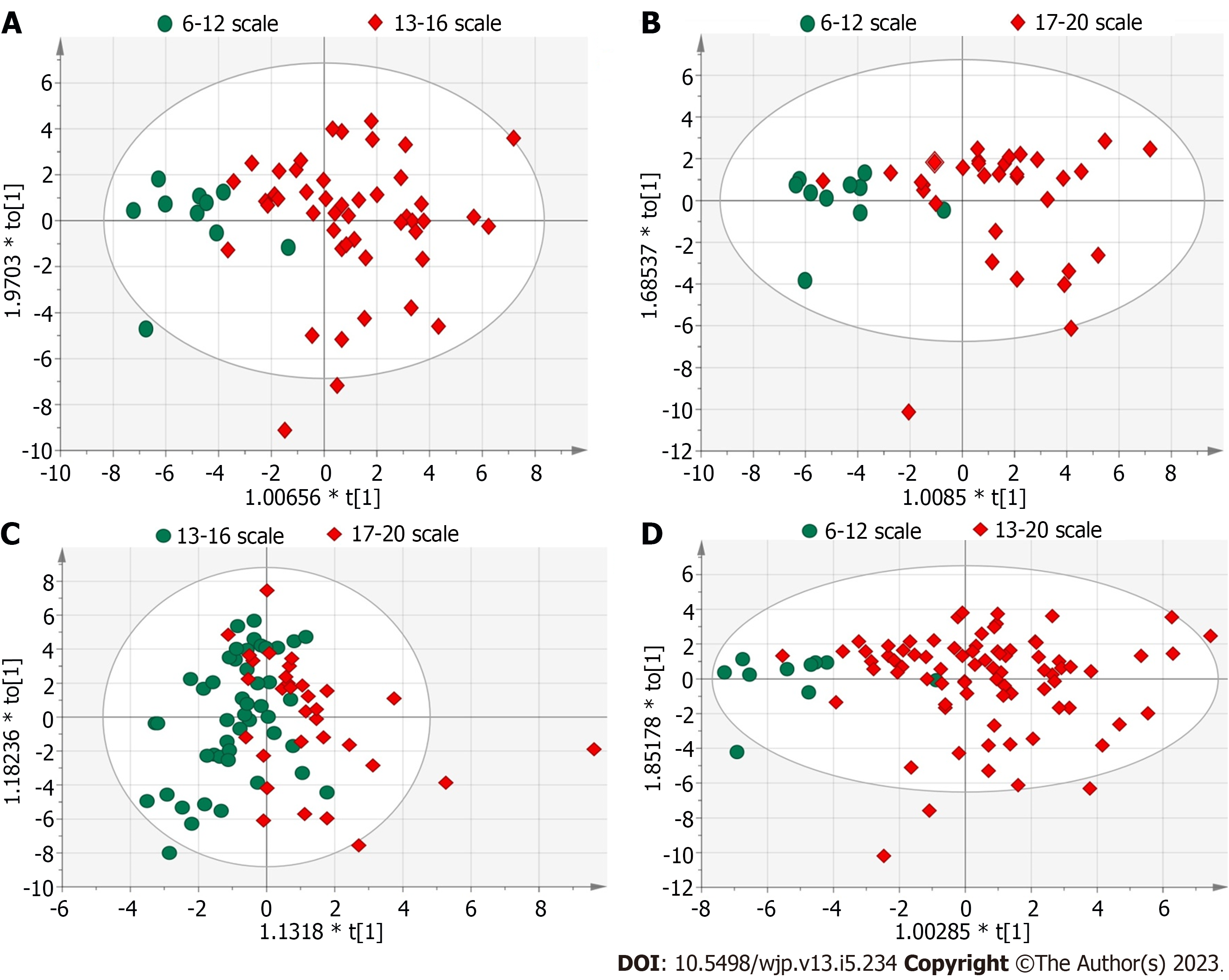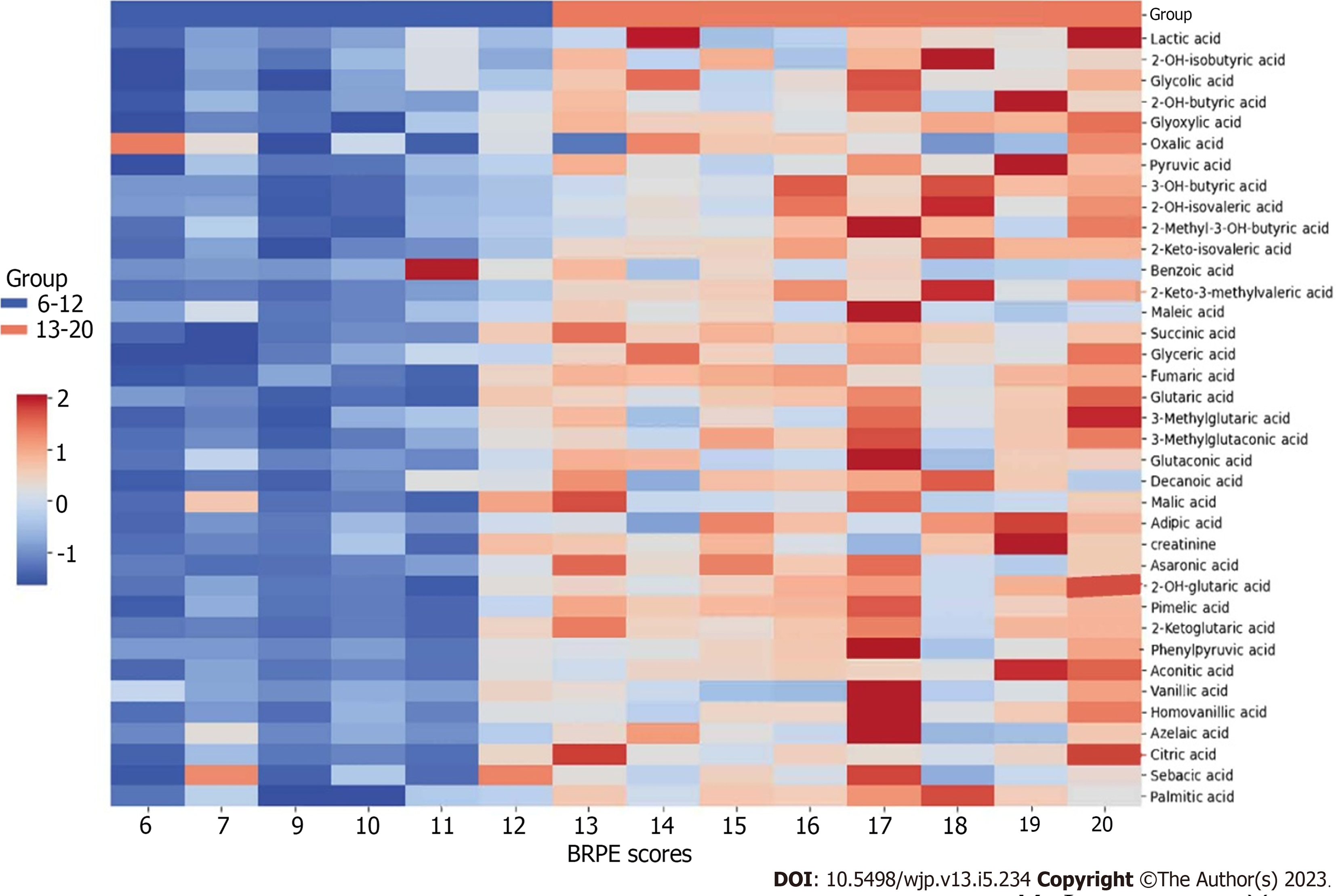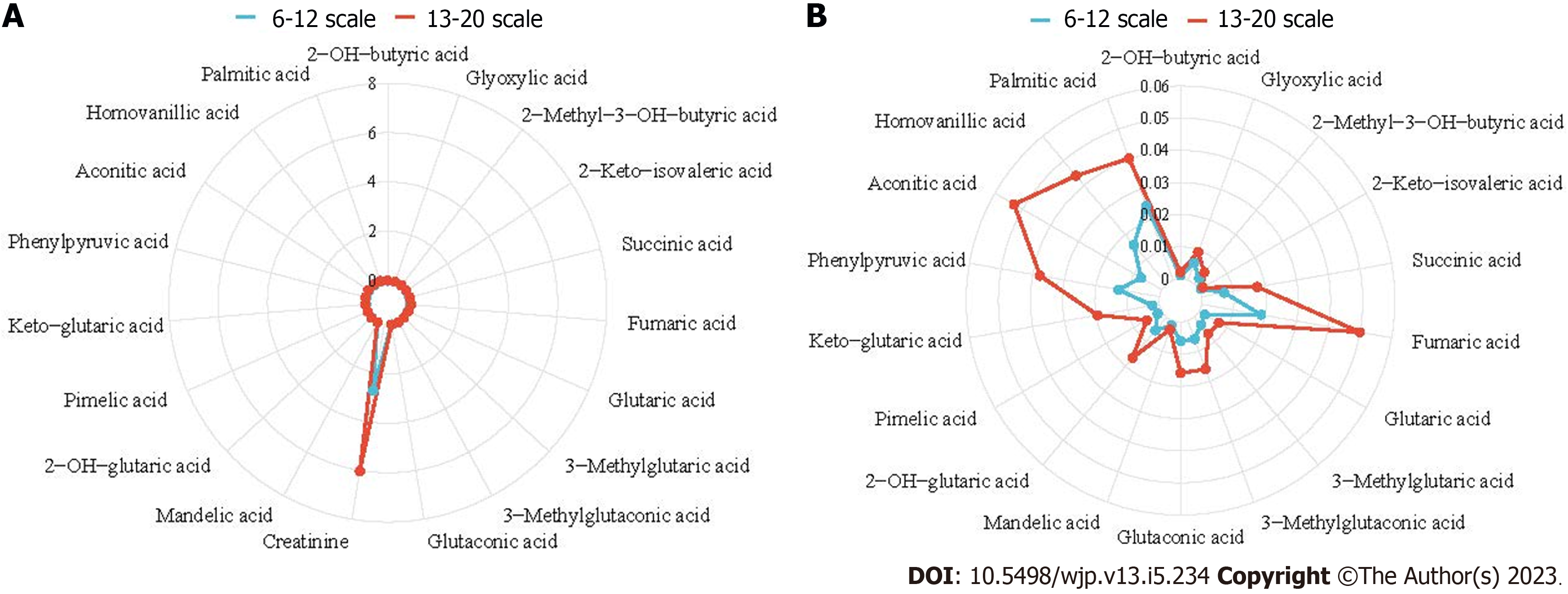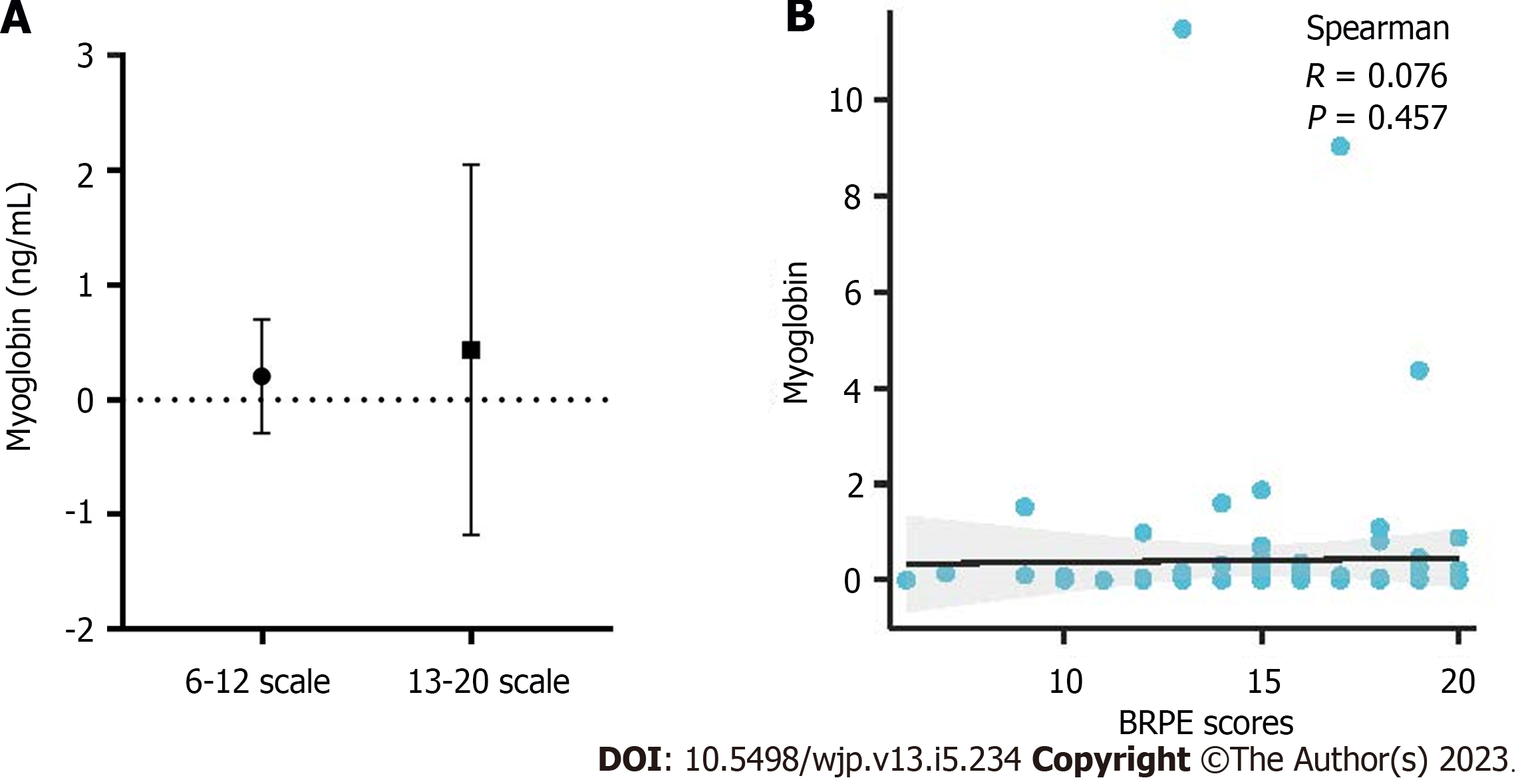Copyright
©The Author(s) 2023.
World J Psychiatry. May 19, 2023; 13(5): 234-246
Published online May 19, 2023. doi: 10.5498/wjp.v13.i5.234
Published online May 19, 2023. doi: 10.5498/wjp.v13.i5.234
Figure 1 Changes in organic acids and myoglobin levels before and after exercise.
A: Volcano maps before and after training; B: Statistical analysis of myoglobin levels before and after training.
Figure 2 Principal component analysis scores of organic acid metabolites among the 6-12, 13-16 and 17-20 score groups.
Figure 3 Orthogonal partial least-squares discrimination analysis of Borg’s Rating of Perceived Exertion Scale and organic acid metabolism.
A: Orthogonal partial least-squares discrimination analysis (OPLS-DA) between the groups with scores of 6-12 and 13-16; B: OPLS-DA between the groups with scores of 6-12 and 17-20; C: OPLS-DA between the groups with scores of 13-16 and 17-20; D: OPLS-DA between the groups with scores of 6-12 and 13-20.
Figure 4 Heatmap of Borg’s rating of perceived exertion Scale and organic acid metabolites.
BRPE: Borg’s rating of perceived exertion.
Figure 5 Radar chart of the metabolism of different organic acids.
A: Radar chart including creatinine; B: Radar chart excluding creatinine.
Figure 6 Pathway analyses of different organic acid metabolites between the groups with Borg’s rating of perceived exertion scores of 6-12 and 13-20.
TCA: Tricarboxylic acid.
Figure 7 Correlation analysis between Borg’s rating of perceived exertion scale and myoglobin levels.
A: Statistical analysis between the groups with scores of 6-12 and 13-20; B: Spearman’s correlation analysis between the Borg’s rating of perceived exertion scale and myoglobin levels. BRPE: Borg’s rating of perceived exertion.
- Citation: Sang PP, Li J, Tan XD, Peng W, Zhou HH, Tian YP, Zhang ML. Associations between Borg’s rating of perceived exertion and changes in urinary organic acid metabolites after outdoor weight-bearing hiking. World J Psychiatry 2023; 13(5): 234-246
- URL: https://www.wjgnet.com/2220-3206/full/v13/i5/234.htm
- DOI: https://dx.doi.org/10.5498/wjp.v13.i5.234









